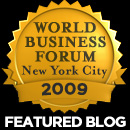Following on from my previous post on the Death of the Chief Innovation Officer (and the forthcoming rise of the VP, Innovation!), I’ve had several people now ask me about the rest of the contents of that presentation I gave on the “State of Innovation” – where is Innovation today?
I personally believe that Innovation is continuing to mature – if we looked at the track of the adoption curve for Innovation as a sustainable business process, my feeling is that it looks somewhat like this:
Back in 2001 when I first got involved with Innovation and Idea Management – we were most definitely selling to the Innovators out there. They behaved in typical Innovator fashion – looking for shiny objects, reading up research to get the latest and greatest in whatever business tools are out there, very little sensitivity to risk, and generally regarded as mavericks within their companies.
What we’ve gone through in the last 7 years is the maturation of that market – and with that a change in not only who’s doing innovation, but also how they’re doing it, and what they’re looking for. It’s also signaled large scale changes in the market and how innovation is perceived and marketed by vendors.
Let’s look at the most obvious indicator – the market landscape: In 2001, there were really only a few very small vendors out there – they were highly fragmented and tended to focus on niche elements of the innovation arena. I remember speaking to an industry analyst from Forrester at the time who told me that despite the fact that they loved our product “if you don’t have competitors, you don’t have a market”. We were missionary sellers to a market that didn’t know what we had or how to use it – and when they did use it, they tended to focus on using it to replace the old school system of paper based suggestion boxes and Excel spreadsheets. It was hard to find someone who could understand the potential in what vendors were trying to sell them – and even harder to find someone willing to look at committing the time, energy and resources into making it sustainable. Only serial entrepreneurs and mad men would dare enter the market at this point (and yes, we were both ;p ) .
By 2004, several more vendors had shown up on the scene – the market became more identifiable, people began to string applications together to make more robust products that the client could understand, and I had that same analyst now tell me that “consolidation will happen in this marketplace – I know of a company who is going to buy you soon”. At this point there started to be people who “got it” on a more regular basis – although they still tended to be predominately mavericks or “movers and shakers” in the company who were out to make an impact and saw an opportunity to do something no one else had. Of course, this led to a boom and bust period for corporate innovation programs as these maverick leaders would make a big impact in the business world and then have to face the consequences – namely they would either:
a) Get Promoted
b) Get given more areas of responsibility in order to kibosh their rebel rousing ways
c) Get hired by someone else in their industry who wanted the magic formula
d) Retire (because another frequent profile of sponsor were near-retirees looking to make a last ditch impact and had nothing to lose
The market today is very different yet again – with a multitude of small vendors starting to flood the markets but ultimately the main market sticking to the few bigger vendors who serve defined markets but have multiple unique selling points to differentiate themselves as they try to find what the mass market that’s coming ahead really wants and needs. Financing is becoming easier because institutions are beginning to actually understand what is meant by the various terms that are used in the marketplace, and what the business proposition is. Enterprises as a whole are starting to understand – and nowadays, if they aren’t actively approaching the vendor market in some way, it doesn’t take them long to figure out how it can be useful to them. The market is rich with options – both from the software world and from the consulting world – big and small – local and global – there’s a vendor who can satisfy the market’s needs. Prices are high, but so are the rewards for sustainable innovators – and the current recession is only going to strengthen the innovation agenda (see my entry on this topic for more on recessions and innovation).
My personal feeling is that we’re about to begin tapping into the Early Majority stage of the adoption curve now having crossed the Innovator’s Chasm (the make or break point for any concept or product where you have to bridge the gap between the Early Adopters and the beginning of the mass market that is represented by the two majority groups) at the beginning of 2007.
Of course the most interesting changes are happening at the enterprise level – and there are several major trends that are also pointing to this upcoming maturation in the enterprise application of innovation tools and techniques. But that’s a story for another posting… 🙂







I think you are spot on- we are moving across the chasm of innovation maturity but how wide this is will depend on those very sources of tools, techniques, application techniques and integrating methods to bring innovation into the real mainstream. There is a significant change going on at mid level management in integrating innovation which is transforming thinking within organisations. The steps along the path to a greater maturity will be enhanced by approaching innovation in four different ways as service enhancements
1. The scope of innovation management expertise available
2. The changes that take place in innovation management consulting towards a more holistic offering
3. The translation of the tools and techniques so all can use these as part of their daily lives
4. The ability to quantify the business impact through better indicators, short and long term value generation
These will support and bridge over this gap. Making the jump might also be caused by the current crisis as this tends to be the best time for innovation to be most activity worked upon